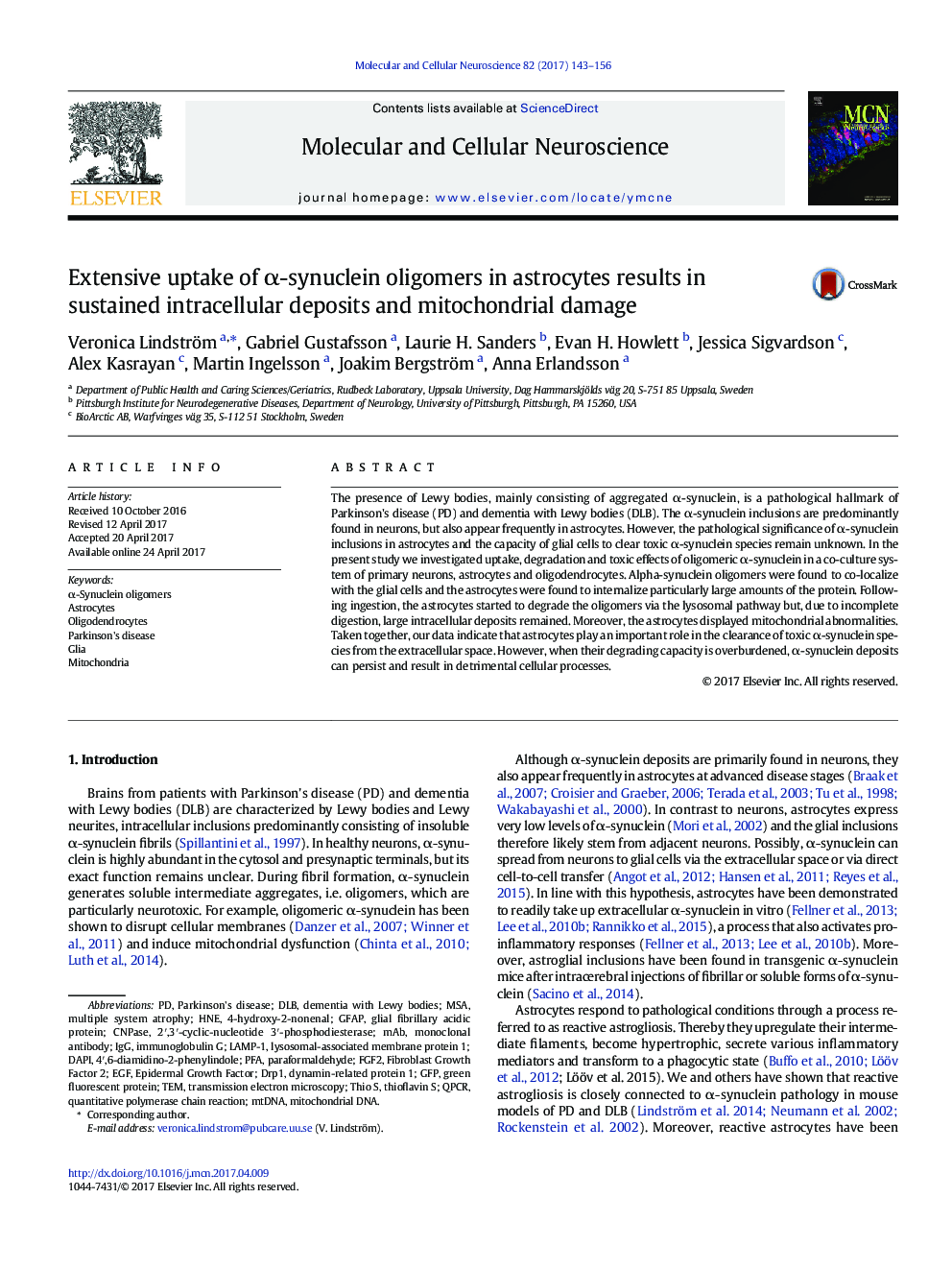| Article ID | Journal | Published Year | Pages | File Type |
|---|---|---|---|---|
| 5534354 | Molecular and Cellular Neuroscience | 2017 | 14 Pages |
â¢Astrocytes rapidly ingest large amounts of oligomeric α-synuclein.â¢Due to incomplete lysosomal degradation, the α-synuclein is intracellularly stored.â¢The accumulation of α-synuclein induces astrocytic mitochondrial impairments.â¢Our results emphasize an important role of astrocytes in α-synucleinopathies.
The presence of Lewy bodies, mainly consisting of aggregated α-synuclein, is a pathological hallmark of Parkinson's disease (PD) and dementia with Lewy bodies (DLB). The α-synuclein inclusions are predominantly found in neurons, but also appear frequently in astrocytes. However, the pathological significance of α-synuclein inclusions in astrocytes and the capacity of glial cells to clear toxic α-synuclein species remain unknown. In the present study we investigated uptake, degradation and toxic effects of oligomeric α-synuclein in a co-culture system of primary neurons, astrocytes and oligodendrocytes. Alpha-synuclein oligomers were found to co-localize with the glial cells and the astrocytes were found to internalize particularly large amounts of the protein. Following ingestion, the astrocytes started to degrade the oligomers via the lysosomal pathway but, due to incomplete digestion, large intracellular deposits remained. Moreover, the astrocytes displayed mitochondrial abnormalities. Taken together, our data indicate that astrocytes play an important role in the clearance of toxic α-synuclein species from the extracellular space. However, when their degrading capacity is overburdened, α-synuclein deposits can persist and result in detrimental cellular processes.
